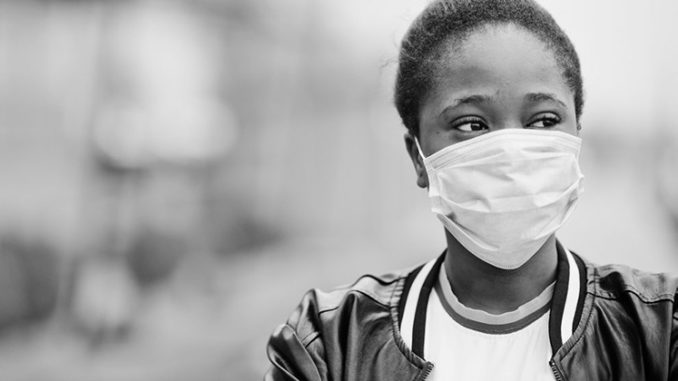
COVID-19 has inflicted disproportionate levels of hardship on BAME groups. Yet the situation cannot change for the better until there is a full and frank discussion about why it has occurred. Within the factors thought to play a part, it is important to recognise one recurring theme: inequality.
Health
Underlying health conditions are a hugely significant factor- certain BAME groups are disproportionately likely to suffer from ‘at risk’ illnesses, or in other words, conditions known to increase the threat posed by COVID-19.
For example, black and South Asian groups suffer much higher rates of diabetes than the population as a whole, a fact that may account for the increased levels of mortality in these groups. Added to this, hypertension (high blood pressure) is notably common within Black African and Black Caribbean groups, one of a number of cardiovascular problems known to make a person more vulnerable to COVID-19.
Ethnicity itself does not cause these illnesses to develop. What does however is poverty, something BAME groups far more likely to experience than the white British majority. With this in mind, social deprivation can be seen as an overarching cause of susceptibility to COVID-19.
Geography and housing
Geographic location must also be taken into account, as BAME groups predominantly live in large urban areas with high concentrations of COVID-19. Black Caribbean individuals, for example, on average reside in areas with a third more confirmed cases per capita than white British individuals. Added to this, 60% of the black population in England and Wales live in London, a city that has experienced disproportionately high numbers of deaths.
Housing plays a significant role- all ethnic minority groups are statistically more likely to live in overcrowded accommodation than those from a white British background. Focusing on London specifically, less than 2% of white British households have more residents than rooms. For Bangladeshi households, this figure stands at just under 30%.
Overcrowded housing not only increases the risk of transmission, but makes self-isolating extremely difficult. Whilst these living arrangements are often caused by poverty, it is important to note that multi-generational households are also common in South Asian groups for cultural reasons.
Occupational risks
Although the disparity in deaths is still not fully understood, the preponderance of BAME individuals in key worker roles is thought to be a pivotal factor. Those exposed to the virus through work are at a considerably higher risk than the wider population, and members of BAME groups are disproportionately likely to have jobs where close contact with COVID-19 is unavoidable.
Black Africans are 50% more likely to be key workers than those of a white British background, and almost three times as likely to work in health and social care. Further to this, Black Africans account for 7% of NHS nurses, despite the ethnic group forming just 2.2% of the overall population. The overrepresentation of BAME groups in dangerous, patient-facing roles may go some way towards explaining the inordinate numbers of deaths.
Yet even within the NHS workforce, a dramatic disparity in deaths has been observed. Although only 20% of all nurses are BAME, they have accounted for a staggering 64% of deaths within this staff group. This suggests that even within high-risk sectors, BAME staff occupy the most dangerous roles. With low pay a pressing issue for BAME groups, it is likely that the most dangerous roles are those that are low-paid.
Economic impact
The economic shutdown will affect some sections of the population more than others. Whilst Pakistanis and Bangladeshis are less likely to be in paid work than other groups, they are also more likely to live in households where only one person is in paid work. If this person works in a shut-down sector, there will be no-one to help cover the loss in income, leaving the whole household vulnerable to destitution.
This is also a problem within the Black African and Black Caribbean groups due to the high numbers of lone parent families. Even for lone parents whose jobs are unaffected, it may prove difficult to balance work and care in the context of disruption to schools and childcare facilities.
In addition to varying family circumstances, varying levels of exposure to the shutdown itself will also lead to certain ethnic groups being affected more than others. Whilst in the population as a whole women are more likely to work in shut-down sectors, this is driven by the white British group. For a number of BAME groups, the opposite is true- Bangladeshi men are substantially more likely to work in a shut-down sector, largely due to their concentration in the restaurant sector. When this is combined with the fact that Bangladeshi women are less likely to be in paid employment, the Bangladeshi group as a whole is notably exposed to the economic shutdown.
Inequality can be seen as a unifying theme in the factors discussed. From the virus itself to the impact of the shutdown, BAME groups are left dangerously exposed to the pandemic by social disadvantage. Creating a truly just society is the only way to rectify the situation.
Cameron Boyle is a political correspondent for the Immigration Advice Service, an organisation of immigration solicitors.







Racism has got to be exposed for what it is .. small minded uselessness and a 1st step to deal with this virus running through our lives is to admit to it!
Becoming aware of ones own destructiveness is the pathway to change for the better – for all our sakes!